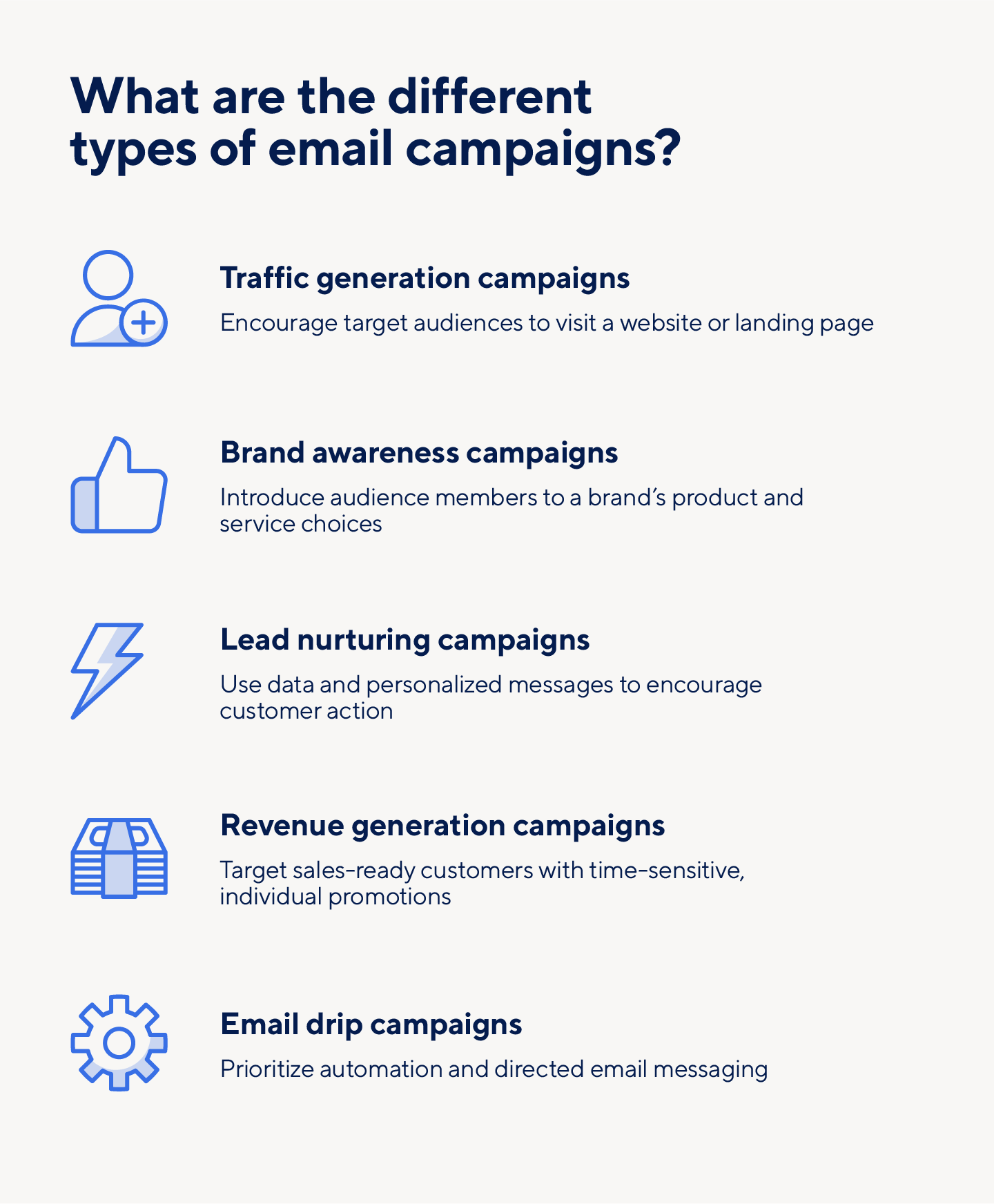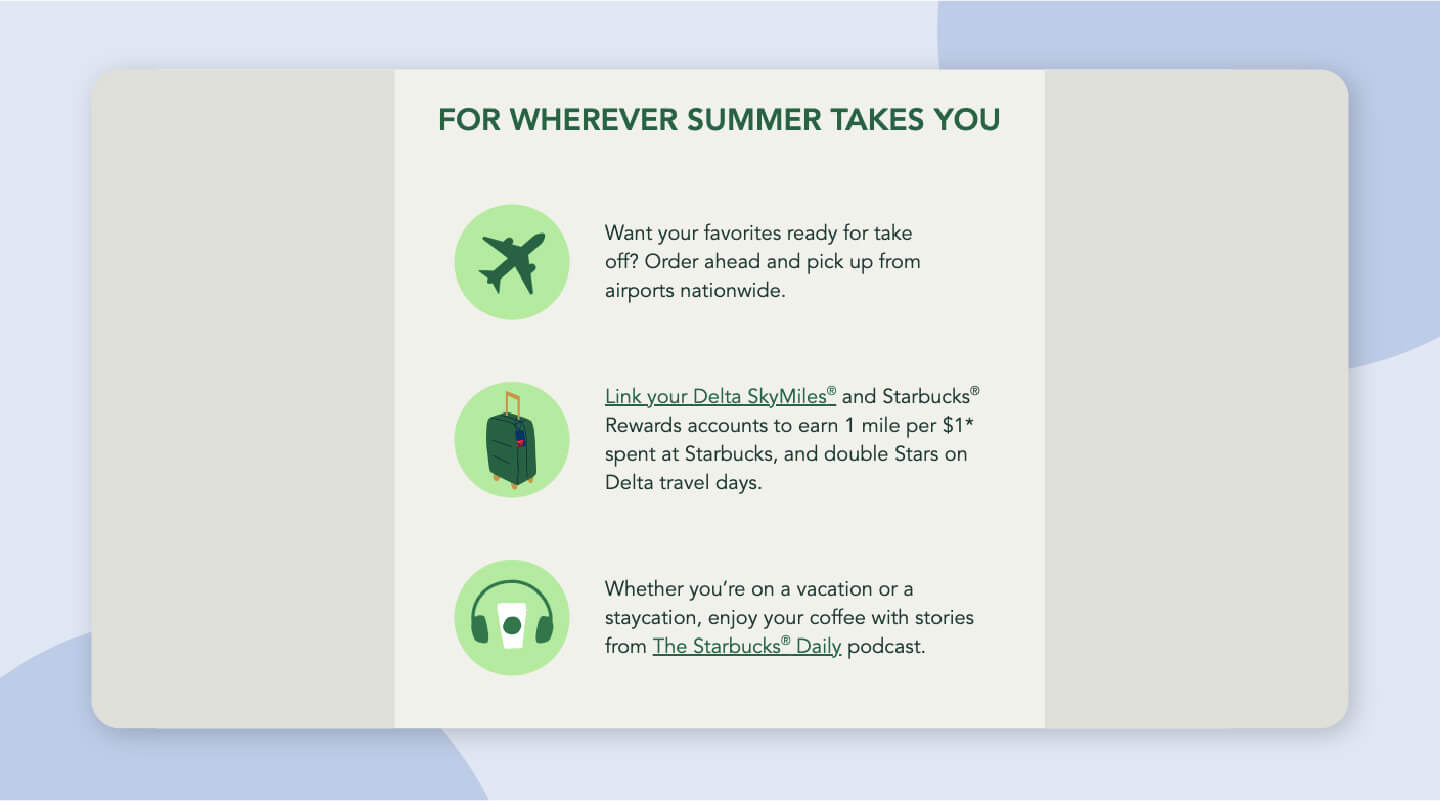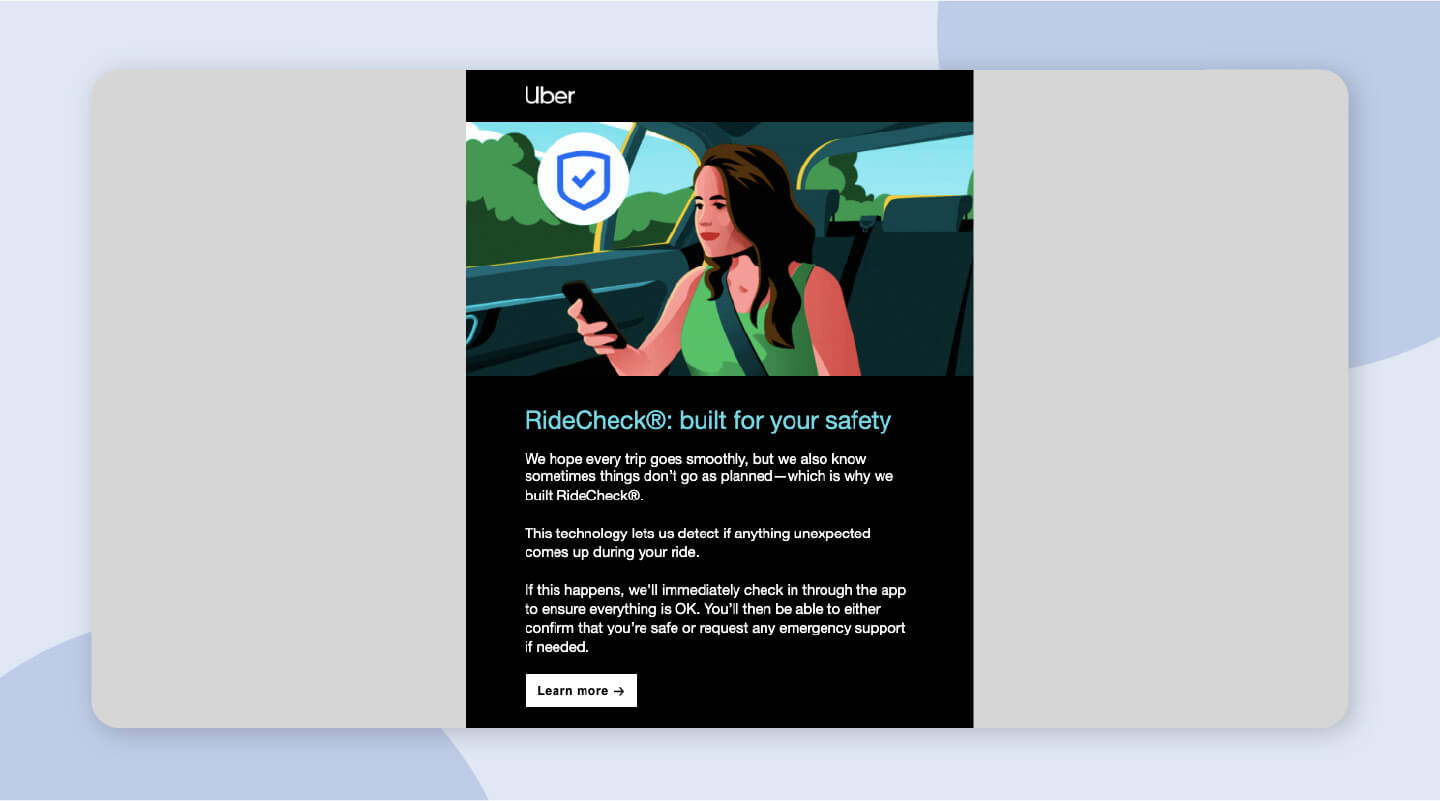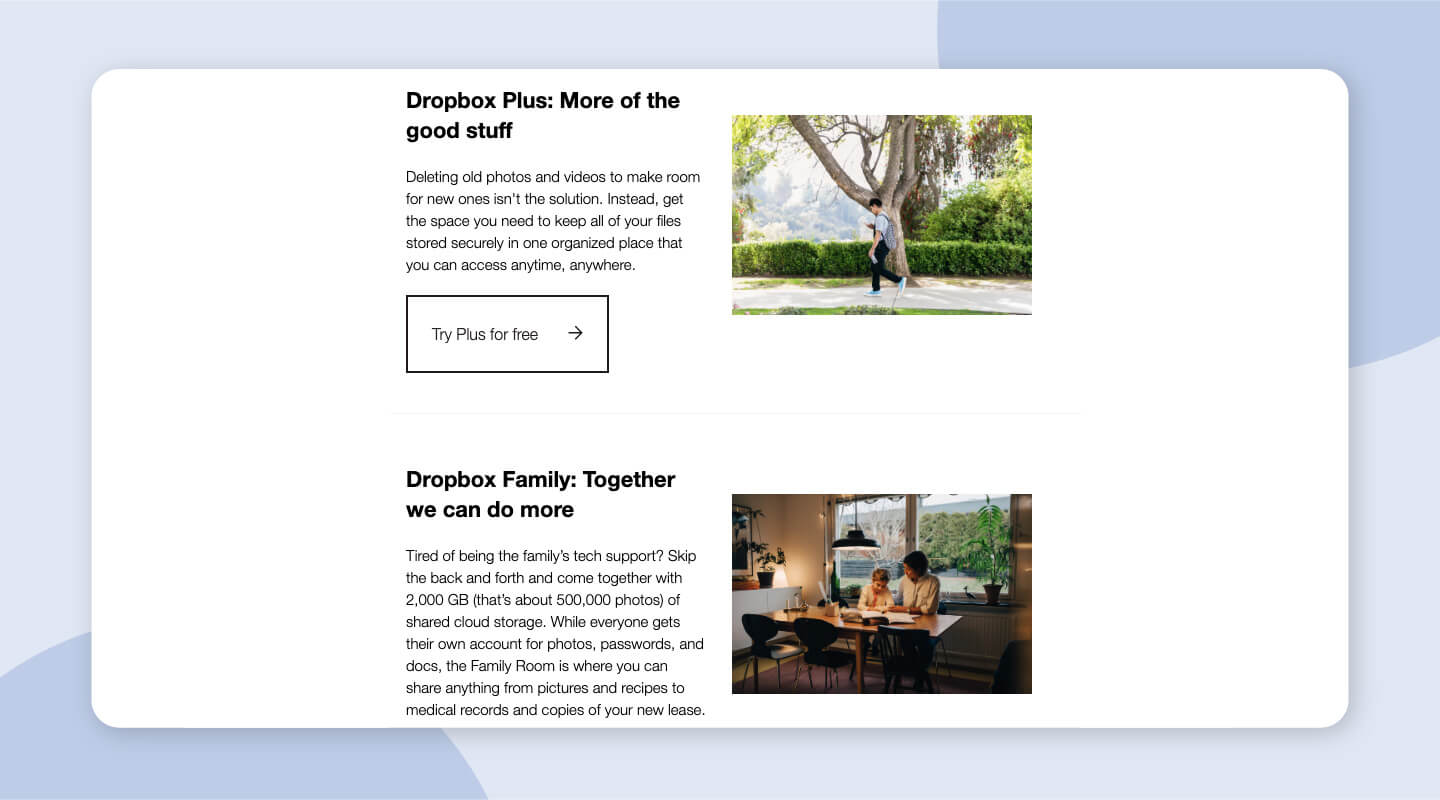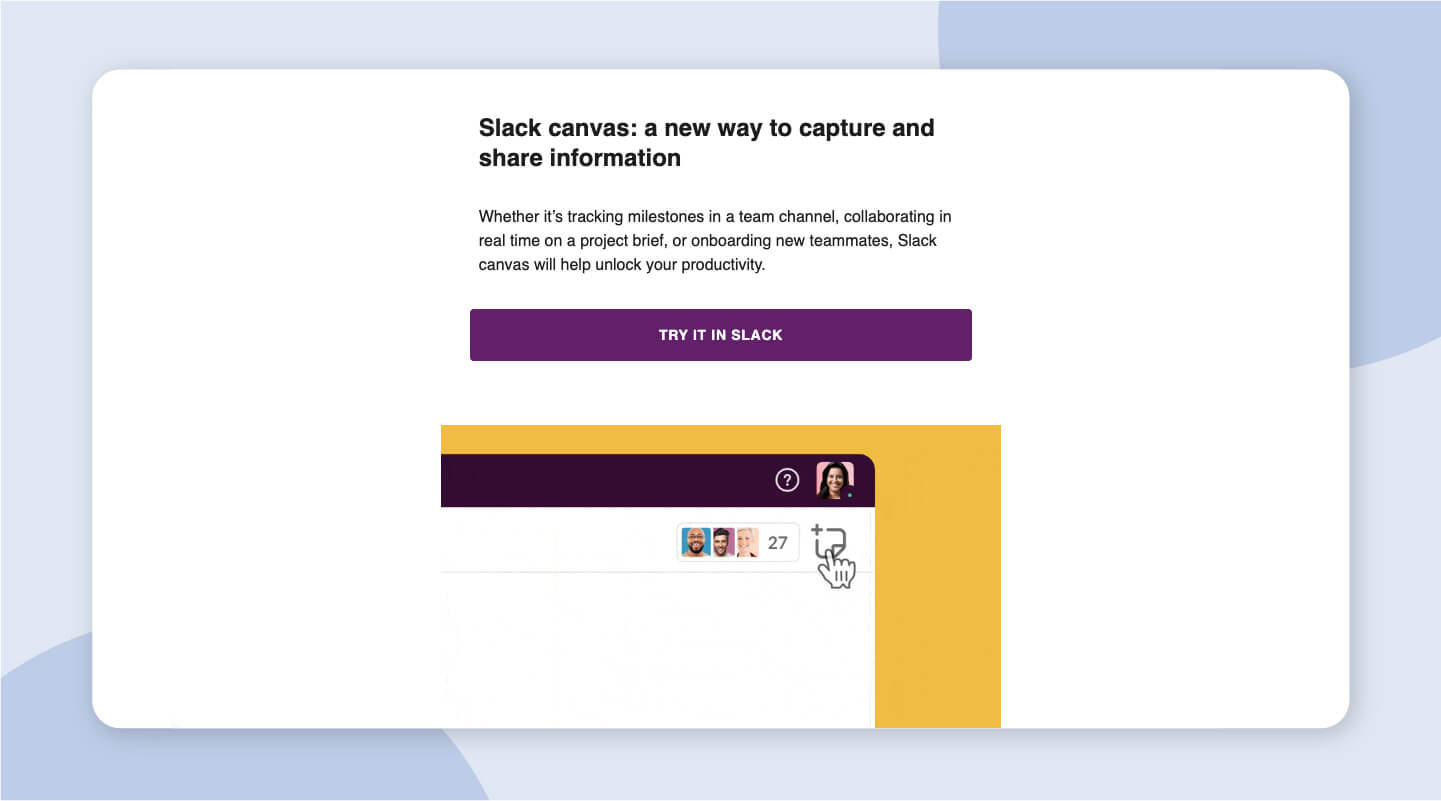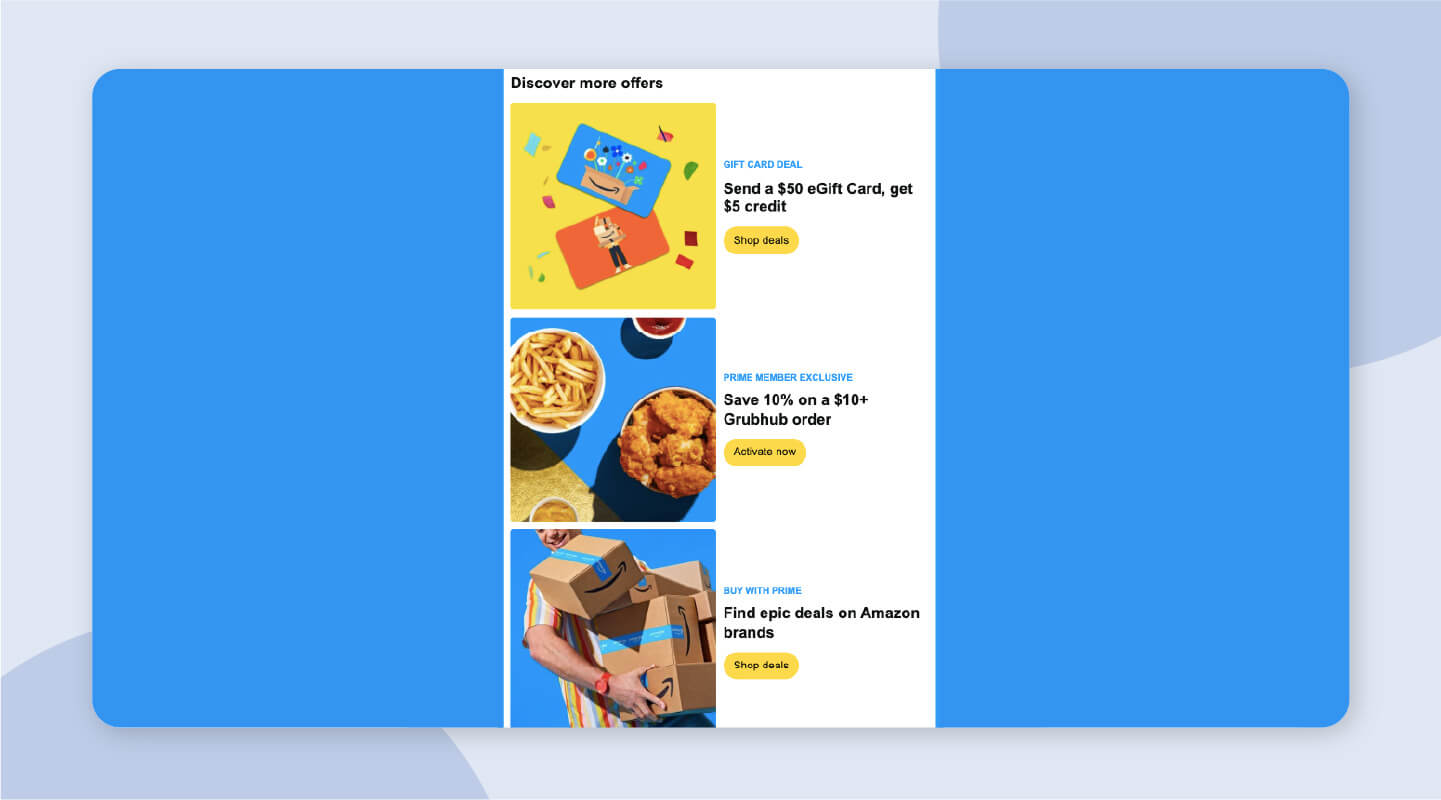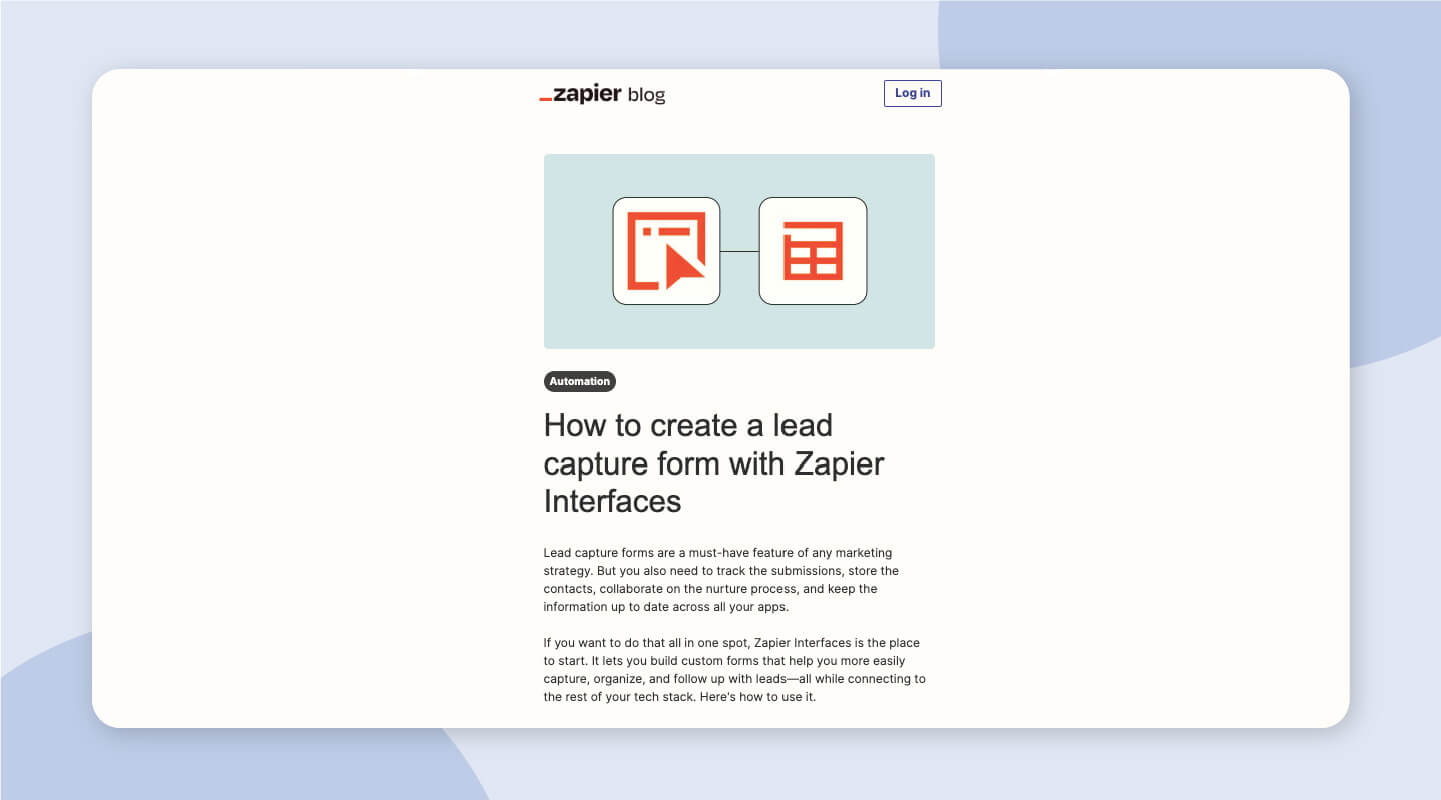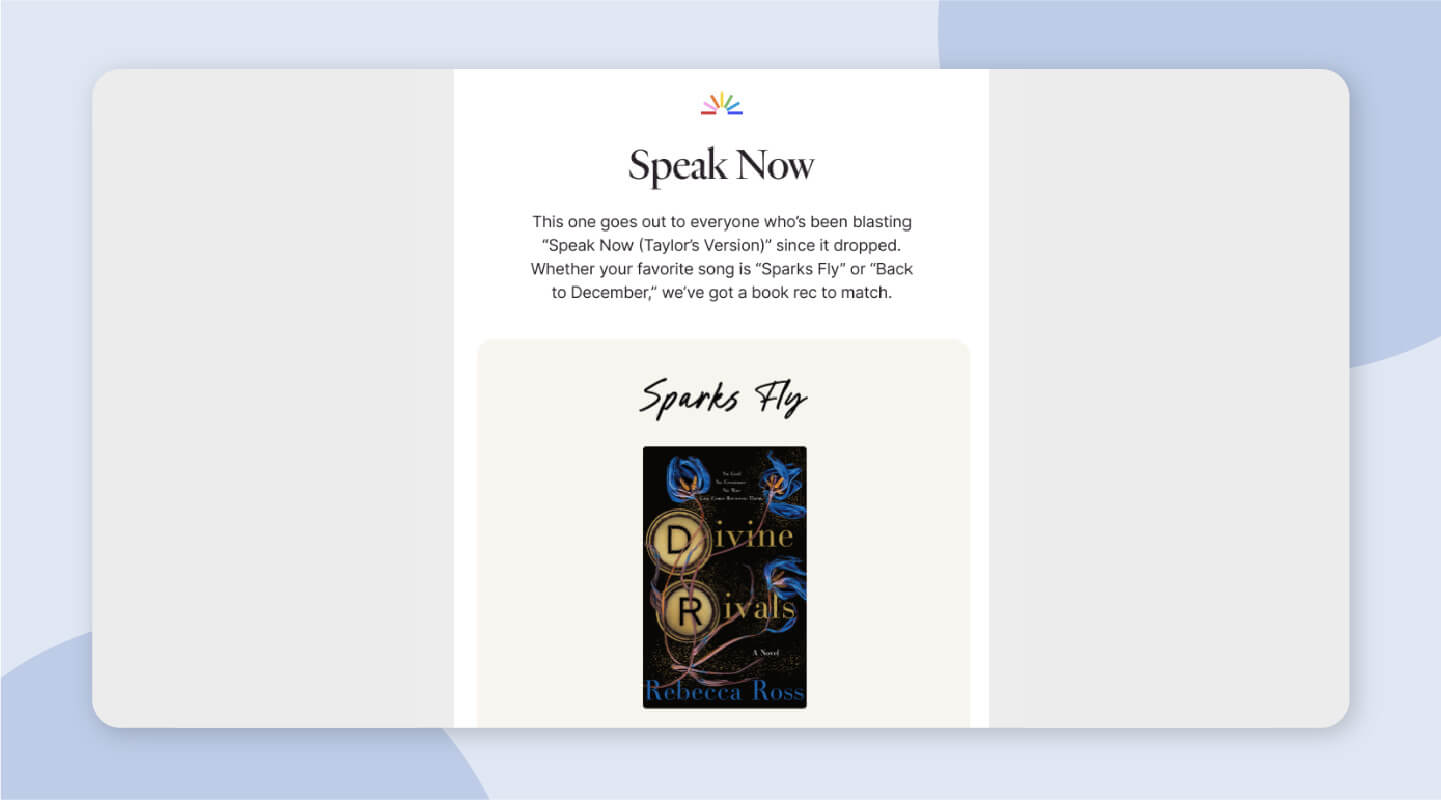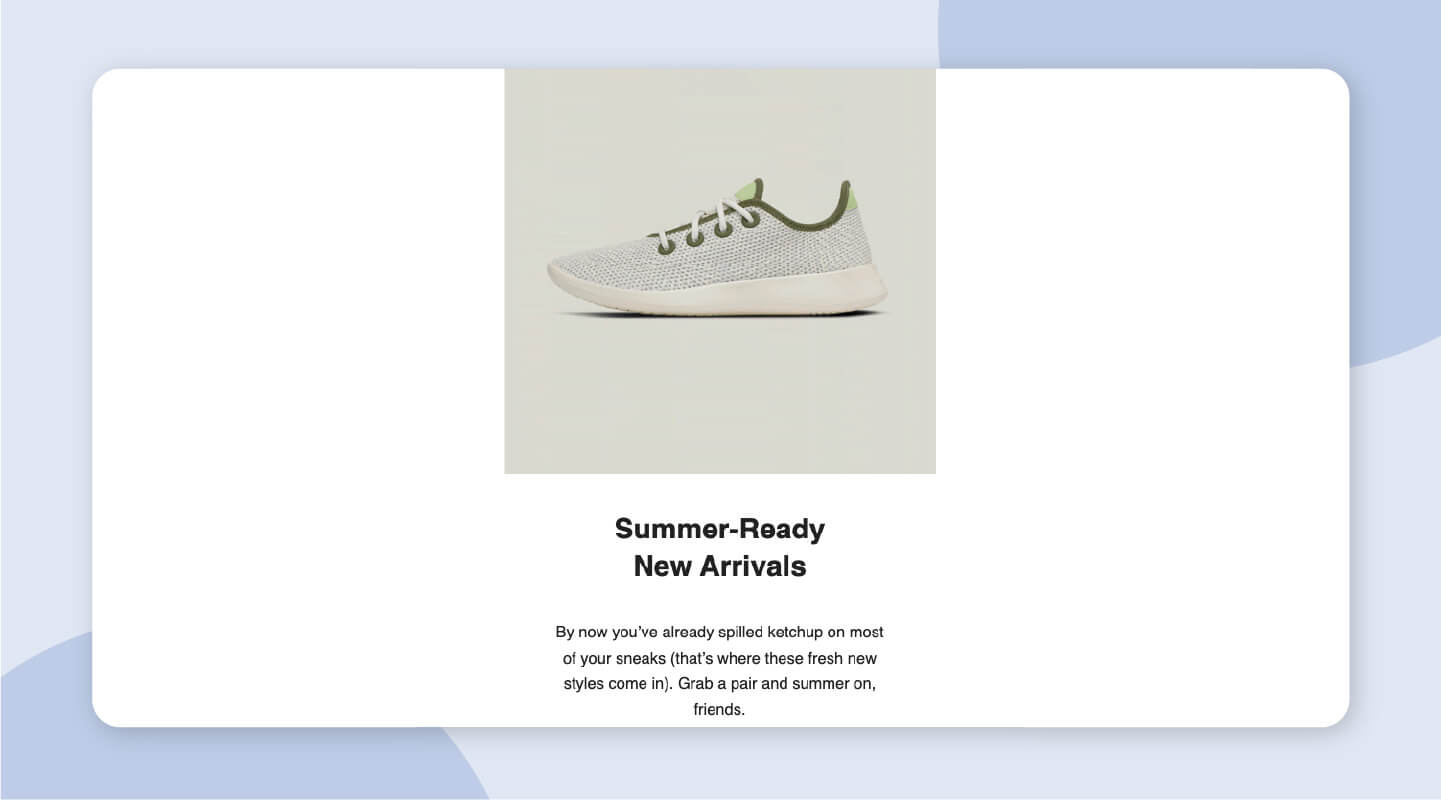What Is an Email Marketing Campaign?
An email marketing campaign is a digital marketing strategy that uses email to enhance engagement, conversions, and brand awareness. These emails include various calls to action (CTAs) for recipients to click — newsletter sign-ups, website links, brand contacts, product pages, and more.
Digital marketing tools help marketers automate campaign emails, analyze customer data, and streamline campaign updates. This type of digital marketing keeps brands top of mind throughout the buyer’s journey, and email marketing campaigns allow marketers to personalize content and interact with their target audience.
Before creating and launching a campaign, marketers must verify the audience members’ opt-in status. Unsolicited emails may cause potential customers to lose interest in a company’s products or services.
Types of Email Campaigns
Brands can deploy different types of email marketing campaigns to reach specific goals, like generating traffic, revenue, or awareness. Each campaign uses unique, often personalized emails to motivate customers to make decisions throughout their journey with a brand.
Here are the key forms these email campaigns can take:
- Welcome emails: Introductory emails should provide customers with clear next steps, including purchasing and learning opportunities.
- Newsletters: Regular newsletter emails update customers about a brand’s products, events, and news.
- Abandoned cart emails: Shoppers with abandoned carts show clear purchasing intent. Personalized reminder emails about these carts can motivate customers to finish a purchasing action.
- Product emails: Prior to product launches, brands can send customers product emails to build awareness, encouraging engagement and future purchases.
- Promotional emails: Brands with new or updated products should send past, present, and potential customers promotional emails with product descriptions and clear CTAs.
- Feedback emails: Use surveys to collect customer feedback. Marketers can use the survey data to create customer-centric campaigns, products, and services.
- Informational emails: Emails containing detailed industry information enhance a brand’s authority and thought leadership.
To begin any campaign, before crafting an email or investing in automation software, marketers must establish who they are trying to reach, how to reach that audience, and what the call to action will be. These details will determine which type of email campaign best suits their needs.
Traffic Generation Campaigns
Email campaigns are a great way to encourage an audience to visit a website or landing page. Traffic-generating emails use attention-grabbing subject lines, engaging body copy, images, videos, and a clear CTA to direct recipients to the desired destination.
Successful traffic generation campaigns may include personalized content or target individuals with a known interest in a brand’s products or services.
Brand Awareness Campaigns
Customers must be informed about a brand’s offerings before they can make any kind of purchase. Brand awareness emails introduce recipients to products and services. Additionally, these campaigns help establish brand authority, strengthen thought leadership, and encourage continued customer-brand interactions.
Lead Nurturing Campaigns
Every brand’s main goal is to sell products and services, but successful brands develop loyal, satisfied customers in the process. Lead nurturing email campaigns target buyers with personalized content to build their relationship with the brand and encourage well-researched decisions.
Emails can include customer data — like items similar to recent purchases or left in abandoned carts — to motivate recipients to make a purchasing decision they already know they’re interested in. These emails should only be targeted at customers who show an intent to purchase.
Revenue Generation Campaigns
Most marketing emails target sales conversions and revenue generation. That said, specific revenue-focused emails use direct CTAs to accomplish these goals. These might include abandoned cart emails, time-sensitive sales emails, and individualized discount codes for special events or specific customers.
While the intent of these revenue-focused emails is clear, their content must be conscientious and persuasive rather than pushy or forceful.
Email Drip Campaigns
An email drip campaign uses automated email responses to reach users and encourage them to move forward in the buyer’s journey. Automation simplifies the marketing process — emails are sent when triggered by an individual’s opt-in, cart abandonment, or other behaviors.
Email Campaign Examples: 20 Successful Launches
There’s no one path to a successful email marketing campaign, but most marketers agree on the best practices to follow. Effective emails include attention-grabbing subject lines, engaging CTAs, crisp design assets, and concise copy.
In addition to these practices, top brands organize their content with calendar templates and automate processes with marketing software. With all of these strategies at work, the following 20 brands have created incredibly successful campaigns.
Download Email Marketing Calendar Template
Microsoft Excel
| Google Sheets
An email marketing calendar template is a simple, streamlined solution to campaign organization. Our template allows users to track subject lines, images, copy, and more.
1. Netflix
One of the biggest streaming platforms in the world, Netflix embraces its image-heavy branding in email campaigns. With vibrant, image-forward content, Netflix captures the reader’s attention, notifies them about new releases, and quickly communicates personalized recommendations — even with little text.
- Why it works: “Many campaign emails are overly focused on text, which can become boring for users to look at. Creating a marketing email with a heavier focus on colorful, eye-catching visuals can present a much stronger message and improve reader engagement.” — Todd Saunders, CEO of FlooringStores
2. Starbucks
Starbucks offers its customers plenty of product, reward, and partnership options. Its email campaigns use clean and simple iconography to update customers on new ways to interact with the brand and inform them about collaborations with brands like Delta and Headspace.
- Why it works: “Starbucks has excellent, effective email campaigns because it tells stories, engages customers with worthwhile promotions, and keeps things relatively simple.” — Jess Fields, CEO of Precision Outreach
3. Venmo
In the world of online banking, security is a customer’s number one concern. Venmo provides clear information about its updated security features while promoting Purchase Protection. Responding to consumer concerns increases brand authority and trust — no purchase necessary.
- Why it works: With updated options, Venmo provides customers with brand-backed security without requiring any purchases or subscription fees. The brand also allows users to learn more about its services before committing.
4. Uncommon Goods
Uncommon Goods, an online marketplace for unique products, understands that life is full of ups and downs. Its product emails introducing memorial glass sculptures use clear, respectful copy to communicate what service they aim to provide with these meaningful mementos.
- Why it works: Uncommon Goods uses authentic and transparent product emails to promote unique merchandise and clarify the purchasing process. Customers don’t need to visit a different page to understand the process, and they can make a purchasing decision directly within the brand’s email.
5. charity: water
Fighting to end the water crisis, charity: water understands that solving worldwide humanitarian emergencies requires substantial support. Its email campaigns feature data-centric copy, statistics about the impact of the water crisis, and clear CTAs requesting donations and other commitments.
- Why it works: Thought-provoking images and powerful, up-to-date statistics showcase the continuous battle against water scarcity, making charity: water’s emails stand out in a crowded inbox.
6. Uber
Animation helps Uber convey an important message without overcomplicating a single email. Underneath the opening image, the body copy presents a quick guide to RideCheck, while a clear CTA button allows users to learn more about the service’s features outside the email.
- Why it works: Animated graphics are an engaging way to draw attention to informational copy, especially when the message builds brand trust and loyalty. Uber is upfront about safety and security options — right in its customers’ inboxes and app interfaces.
7. Dropbox
With multiple audiences comes great responsibility — and many needs to fulfill. Dropbox uses sleek email campaigns to introduce various levels of brand engagement and tiered subscriptions, offering free trials and informational landing pages for family, team, pro, and plus plans.
- Why it works: Dropbox understands the size and range of its target audience. It offers specific plans for customers at different stages of the buyer’s journey. Concise promotional emails allow users to learn more about plans they may be interested in and eventually make informed subscription decisions.
8. Etsy
With distinct subject lines like “Inspired by you!” and clear CTAs throughout the body copy, Etsy communicates its campaign intentions without sacrificing customer individuality or forcing purchasing decisions. Each buyer’s previously liked, saved, or purchased products inform the email’s content.
- Why it works: “As exemplified by brands like Etsy, the secret sauce lies in tailoring content to consumer behavior and preferences, encapsulating the brand's message succinctly, making every interaction a step towards enhancing customer-brand relationships and, when appropriate, having a little fun!” — Lauren Hawk, President of Tinge Communications
9. Spotify
Personalization is key to many successful marketing campaigns. Spotify tailors emails to its target audience and uses customer data to present personalized recommendations — effective ways to increase open and click-through rates while providing users with the information they want.
- Why it works: “Understanding the audience and tailoring the campaign to their interests and behaviors is crucial. Spotify achieves this by highlighting individualized listening experiences and allowing users to share their unique facts.” — Simon Brisk, Co-founder of Click Intelligence
10. Slack
In its email campaigns, Slack promotes values important to its users: organization, productivity, and collaboration. Slack introduces new products and recommends testing methods near the top of the email, so users can consider updates and improvements without interrupting the application.
- Why it works: “A successful email campaign has to ensure a smooth, seamless experience from start to finish. Accessibility, mobile optimization, and ease of navigation are crucial. Brands need to respect their audience's time and preferences. An email campaign is successful when it gives the user what they want, when they want, and how they want.” — Harry Johns White, Marketing Manager at NBA Blast
11. Mint
Lead nurturing campaigns help customers make well-informed purchasing decisions with product-specific options. In its lead nurturing emails, Mint calls customers by name, presents individualized saving options, and offers personal quote comparisons. The brand’s simple messages include straightforward CTAs.
- Why it works: Mint uses the email recipient’s specific coverage needs and data to craft a compelling offer. The email campaign highlights the information clearly and provides CTAs for the customer to explore multiple options tailored to their needs, so they can decide what is right for them.
12. BuzzFeed
BuzzFeed has mastered the e-newsletter. From recipes and quizzes to news and DIY projects, there’s a newsletter designed for almost every reader. BuzzFeed adapts the friendly voice of its copy to appeal to the readers of each newsletter.
- Why it works: Audience segmentation allows BuzzFeed to create hyper-specific newsletters designed specifically for its buyer personas. With plenty of options to choose from, customers are more likely to stay subscribed to single, intent-focused newsletters.
13. Amazon
With campaigns consisting of customer-specific recommendations based on purchasing habits, Amazon proves the power of a clear CTA. Amazon adapts its email strategy to target hyper-specific audiences with niche products, as well as general promotions and click-through opportunities.
- Why it works: “I cannot emphasize enough the importance of metrics and data. Companies like Amazon have mastered this. A strong email campaign is one that's constantly evolving and learning from its own performance. Every click, open, and conversion is an opportunity to understand your audience better.” — Dominik Maka, Head of SEO at LVBET
14. Ritual
Ritual recognizes that many people have become health and wellness skeptics, and addresses their concerns head-on from the first welcome email. The brand designs its email drip campaigns to embrace audience members where they are in their health journey.
- Why it works: Instead of pushing potential customers to make subscription and purchasing decisions, Ritual acknowledges where its target audience members are in the buyer’s journey. Clear design, simple copy, and a welcoming tone invite readers into the fold at their own speed.
15. Klarna
Klarna uses interactive elements and clever body copy in email campaigns to boost promotions and introduce Klarna Drops. With plenty of curated options, customers can make in-email decisions and follow clear CTAs to the correct landing pages for each product.
- Why it works: The brand uses customer data to promote individualized products and discounts in a fun way. Klarna breaks up text with engaging design assets and provides potential customers multiple opportunities to engage with the brand.
16. Zapier
Zapier prioritizes informational emails in its blog-based campaigns. By focusing on the specific abilities of its product, Zapier provides interested customers with valuable answers to inevitable questions, which can increase its brand equity, authority, and customer loyalty.
- Why it works: By anticipating questions about old and new products, Zapier presents customers with research-backed answers to complicated questions. Customers will learn to trust the brand to respond with step-by-step instructions on how to use its products.
17. Airbnb
As product and service purchasing patterns emerge in longtime customers, Airbnb considers how to offer readers exciting twists on old favorites. For past users, the brand promotes revisits to beloved cities but adds value by introducing unique, locally loved attractions.
- Why it works: “Airbnb has successfully used email campaigns to engage users, promote new listings, and drive bookings. They leverage historical data to tailor their messages to individual interests based on users' previous searches and preferences. Their emails are made even more engaging and memorable through the use of stunning photos, persuasive copywriting, and interactive elements.” — Emily Onkey, Co-founder and CMO of Aplós
18. Chipotle
Glowing reviews — on a business’s own site or on social media — create word-of-mouth buzz that encourages potential customers to engage with a brand. Alongside digital assets, Chipotle includes reviews in the body of its emails to amplify customer-created messages.
- Why it works: “Successful email campaigns go beyond flashy designs; they engage, educate, and evoke action. Brands like Chipotle excel in this area, with their campaigns often featuring personalized recommendations, time-sensitive deals, and authentic stories that resonate with their audiences.” — Marshal Davis, President of Ascendly Marketing
19. Fable
Designed for users to create and join book clubs across the globe, Fable uses email to share new titles and public in-app book clubs. Fable connects book recommendations to popular culture moments like the release of Speak Now (Taylor’s Version).
- Why it works: Fable understands its target audience and creates personalized content that celebrates their interests, wants, and needs. By prioritizing time-sensitive events and user-specific interests, this brand capitalizes on pop culture moments.
20. Allbirds
A sustainable clothing, shoes, and lifestyle brand, Allbirds understands that trends come and go. It uses time-sensitive campaigns to encourage gear purchases during specific seasons. These emails can be automated and entice customers at various stages of the buyer’s journey.
- Why it works: Customers presented with time-sensitive, seasonal discounts, products, or services may be motivated to make a purchase — and purchase again during future campaigns. These emails also inform customers about product options and include clear CTAs.
How to Create an Email Campaign
To design an effective email campaign — with a high open-rate and click-through percentage — marketers must first identify their goals and their audience. With these aims in mind, they can create an engaging campaign using data, marketing software, and formatting tools.
According to Brian Gibbs, Digital Marketing Consultant and CEO of BrianGibbs.com, “Creating a great email campaign is like hosting a fantastic party. You need the right people — your target audience. The venue? Their inbox. Your invitation must be compelling, personalized, and relevant. Just like the best parties, it's not just about showing up but engaging your guests. Provide value, foster connections, and keep them wanting more. The best email campaigns aren't a one-off event but a series of unforgettable encounters.”
To create eye-catching, unforgettable email marketing campaigns, marketers should follow eight crucial steps.
Step 1: Recognize Goals
Each email marketing campaign has unique goals. Before beginning the design process, marketers must decide what they want to achieve — whether it’s increasing brand awareness, conversions, and authority. The SMART goal framework helps identify attainable goals for each campaign.
Step 2: Build Buyer Personas
A buyer persona refers to a profile that categorizes customers based on market research and personalized data. Relevant, specific information for one portion of an audience may not apply to other potential customers, and detailed buyer personas clarify these distinctions.
Marketers should build out buyer personas to understand what different customers need, and what campaign tactics will best reach them. It’s easier to craft effective emails with the right audience in mind, and it may be necessary to segment the campaign so every audience member receives relevant emails.
Step 3: Identify Campaign Type and Timeline
How many emails does a campaign need, and when should they hit audiences’ inboxes? Whether pursuing seasonal goals or building out a long-term strategy, marketers must identify their preferred timeline to determine what type of campaign to prioritize.
Every campaign has a unique timeline and goal, whether that’s time-sensitive traffic generation or long-term lead-nurturing. It’s important to evaluate both the timeline and type of campaign to make sure they are aligned before beginning the design process.
Step 4: Use an Email Campaign Template
Email campaign project plan templates are essential tools for compelling, effective campaigns. Templates help marketers decide which members of their target audience should receive a particular email, when to send it, and what content to include.
Email campaign templates can also be shared across teams and updated in real time, keeping projects organized and collaborative.
Download the Email Campaign Project Plan Template
Excel
| Google Sheets | Smartsheet
Streamline your email marketing campaign processes with automation, formulas, and other unique features by using an email campaign project plan. Plus, speed up execution and create informative campaign summaries — all in one place.
Step 5: Use Marketing Software to Produce Your Email
Once the campaign plan is in place, it’s time to produce the emails. Email marketing software speeds up email creation, streamlines data capture, and automates drip campaigns, especially when campaigns involve multiple types of emails.
Emails should include the following:
- Clickable subject lines: Exciting subject lines encourage readers to take a chance on a brand’s content, instead of deleting the email. Assets like subject line emojis may also increase open rates.
- Personalized copy: Messages that answer specific questions, provide relevant product information, or engage with customer data and past purchasing information are more likely to appeal to a target audience.
- Detailed imagery: Videos, animated images, infographics, and high-quality photography can elevate emails past the spam folder.
- Clear CTAs: Including text and button CTAs throughout the body of an email gives readers a clear course of action.
- Opt-out options: Not every potential customer wants to see a brand in their inbox. Customers should be able to opt out of a campaign, but providing options to decrease the number of emails they receive may keep them from opting out altogether.
Step 6: Test Email Formatting
These days, 81 percent of emails are opened on smartphones. Marketers must design emails for all devices — from desktop computers to tablets and mobile phones — and test the formatting across multiple devices and email service providers before launching the campaign.
If needed, marketers can adjust misplaced copy, address broken links, and reformat misplaced design assets before clicking send.
Step 7: Launch and Monitor Metrics
When the email formatting looks good across devices, the campaign is ready for launch. As it runs, the campaign generates metrics for marketers to monitor. Many software options include automated data collection and analysis for key metrics of success.
These metrics include the following:
- Open rate: The open rate is displayed as a percentage and indicates the number of opened emails to unopened emails.
- Bounce rate: The bounce rate is a percentage indicating the number of email addresses to which an email could not be delivered, whether because of broken addresses or other factors.
- Click-through rate: Also known as the email click rate, the click-through rate measures the percentage of audience members who click on some portion of the email’s content.
- Opt-out rate: The opt-out rate tracks the number of people who unsubscribe from a campaign.
Analyzing these metrics will reveal the strengths and potential areas for improvement of a campaign. If the campaign doesn’t achieve its goals, or the brand is unsatisfied with the results, marketers may need to adjust their strategy.
Step 8: Modify Email Elements Regularly
Monitoring metrics can illuminate important trends. Perhaps the target audience responds well to videos, but metrics drop when the subject lines include catchy phrases. Marketers can adjust the emails accordingly or run an A/B test to verify their suspicions.
When brands update their campaign’s tactics to respond to customer data, they establish trust, engage their audience, and build successful long-term marketing strategies.
Track Email Campaigns Effortlessly with Smartsheet
Empower your people to go above and beyond with a flexible platform designed to match the needs of your team — and adapt as those needs change.
The Smartsheet platform makes it easy to plan, capture, manage, and report on work from anywhere, helping your team be more effective and get more done. Report on key metrics and get real-time visibility into work as it happens with roll-up reports, dashboards, and automated workflows built to keep your team connected and informed.
When teams have clarity into the work getting done, there’s no telling how much more they can accomplish in the same amount of time. Try Smartsheet for free, today.
